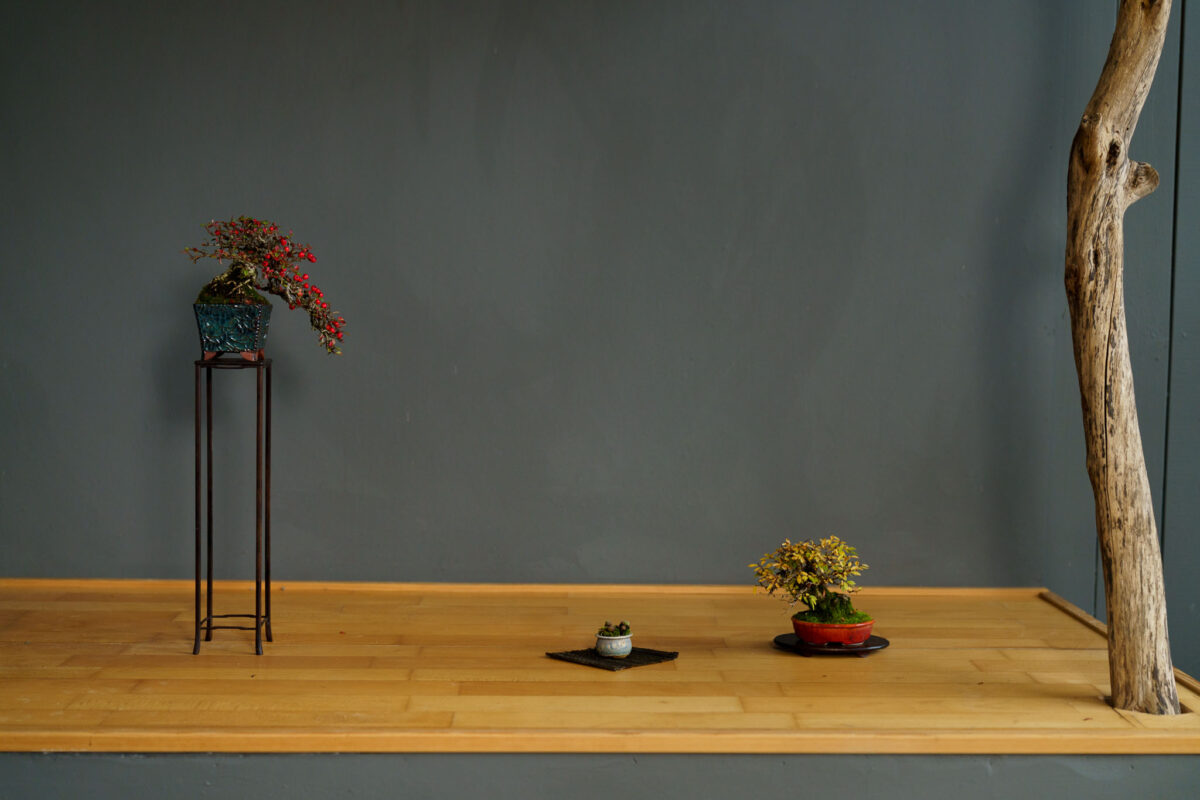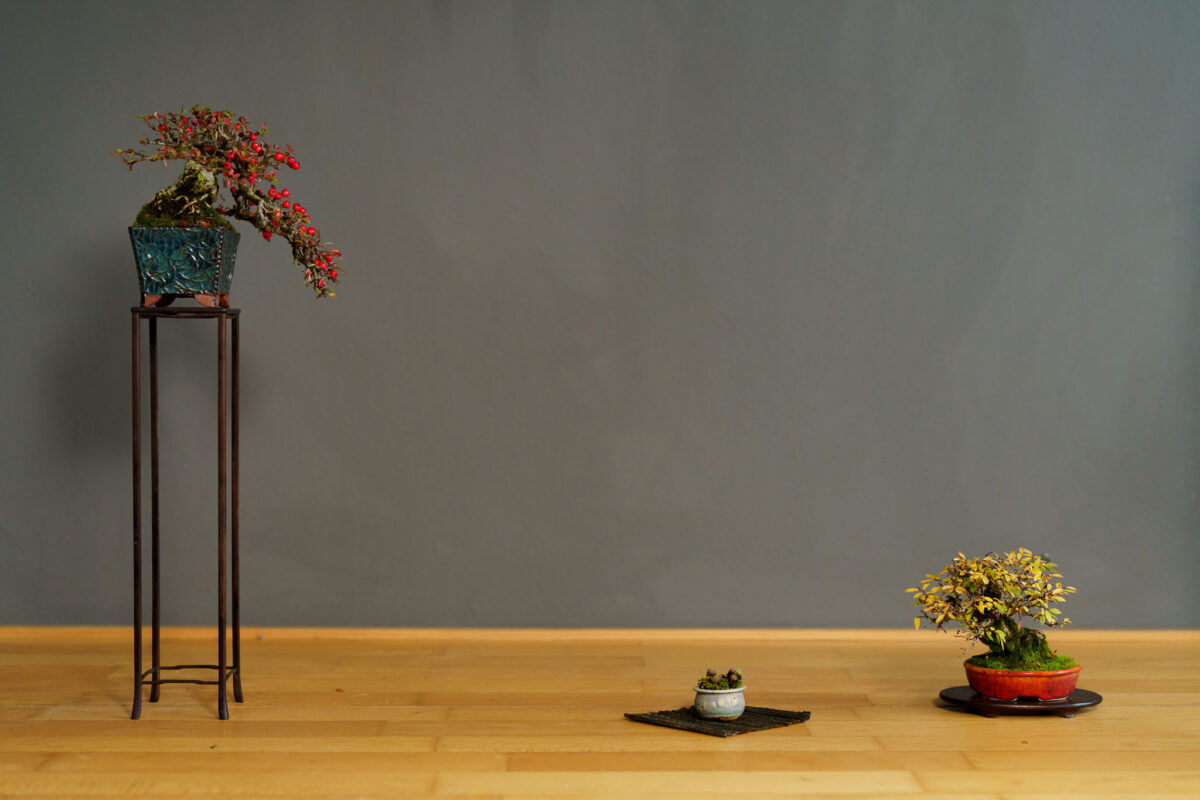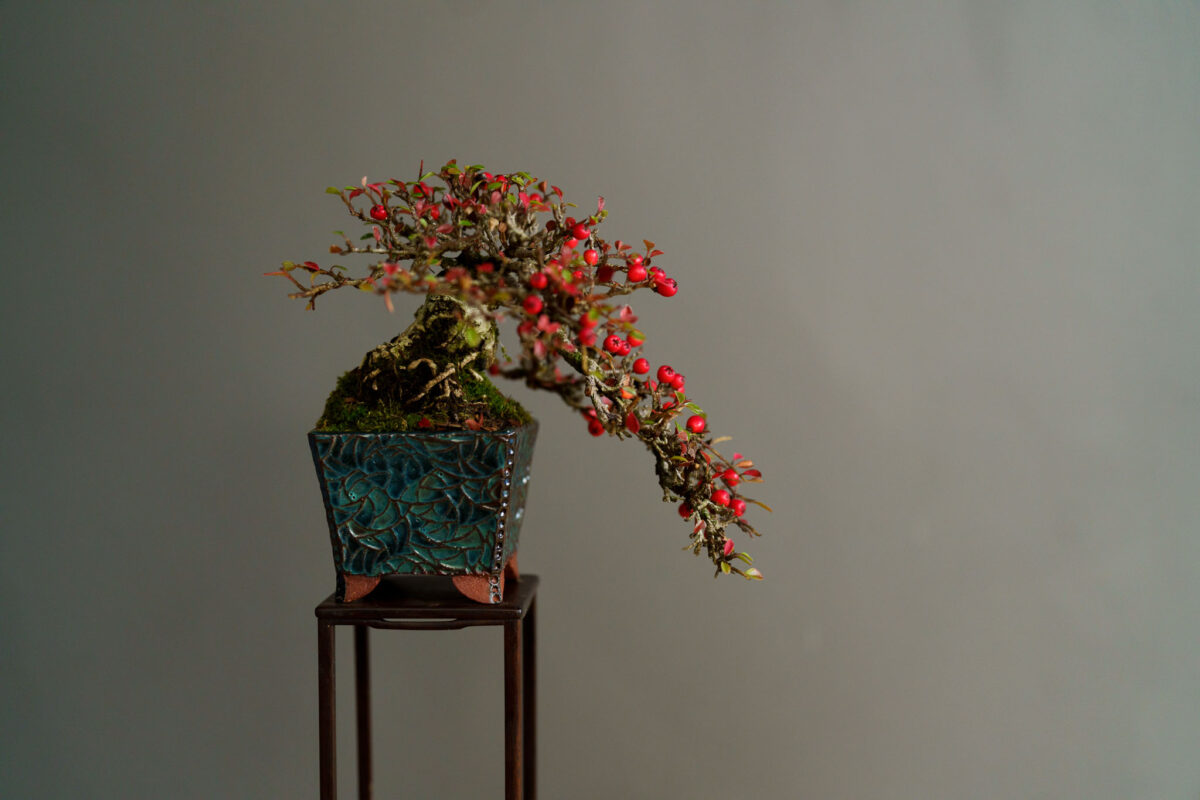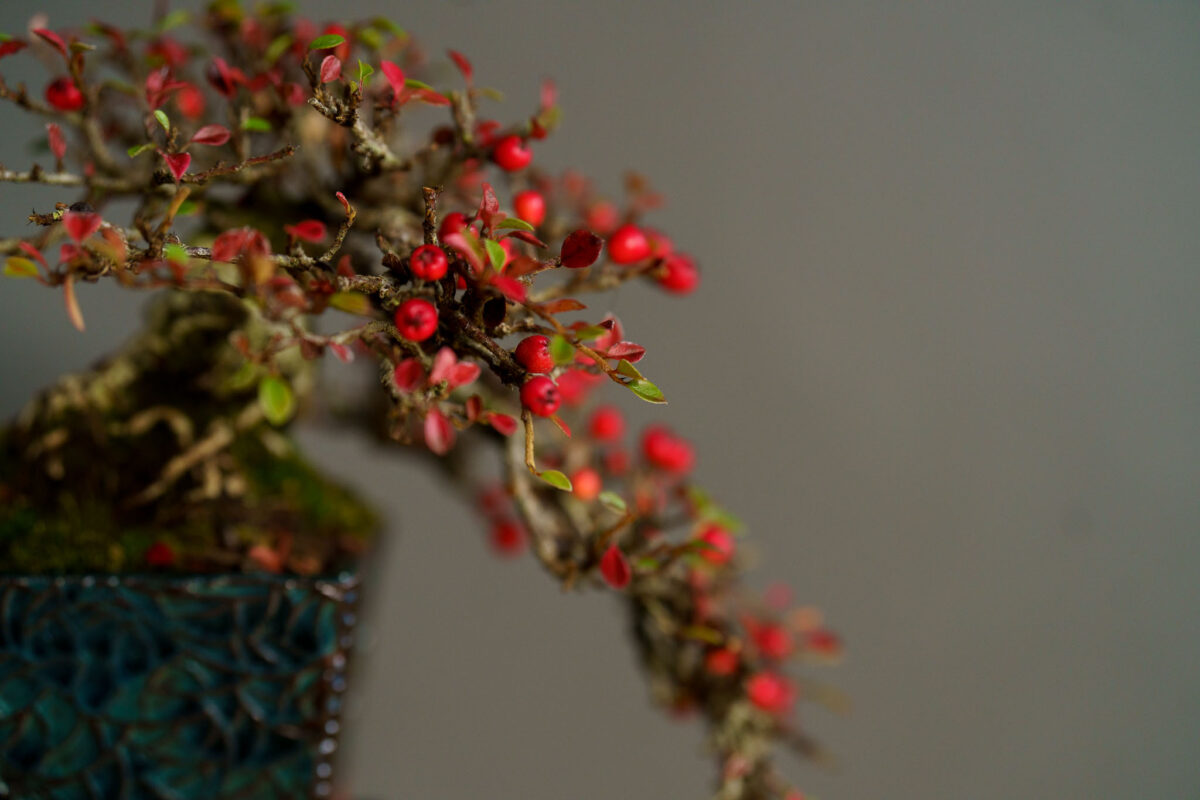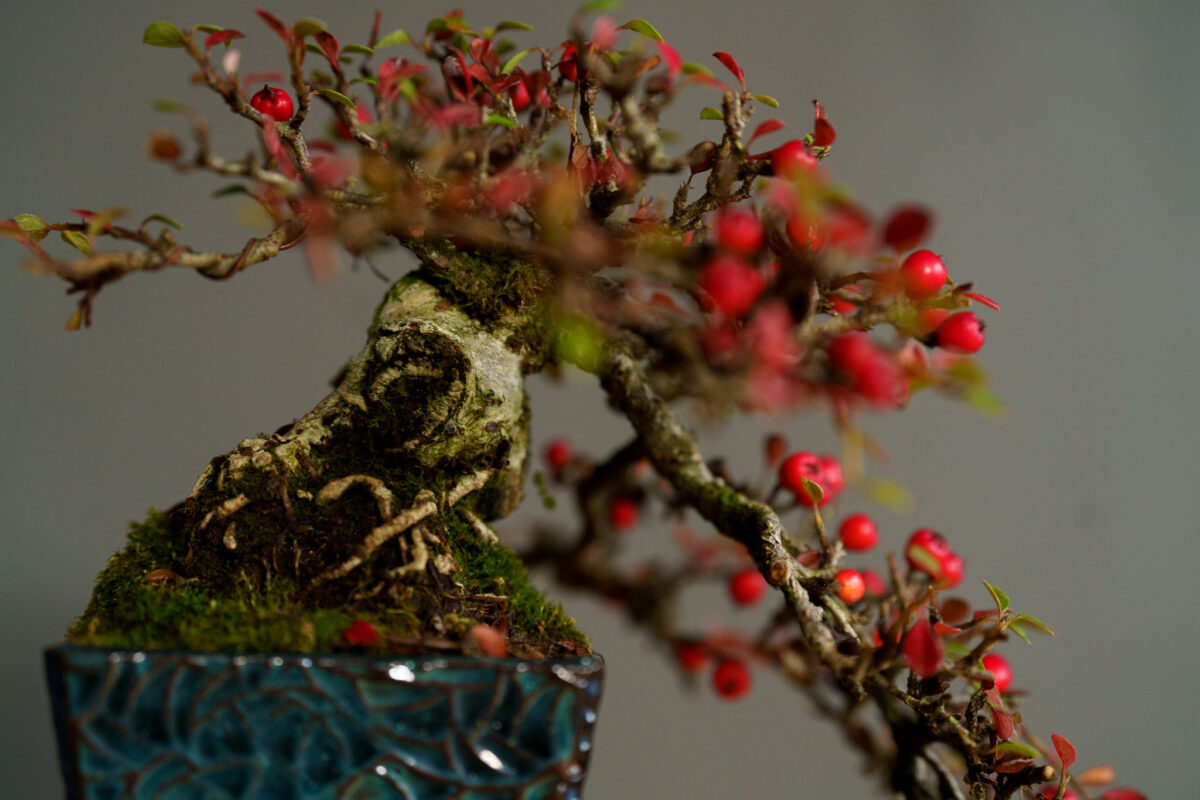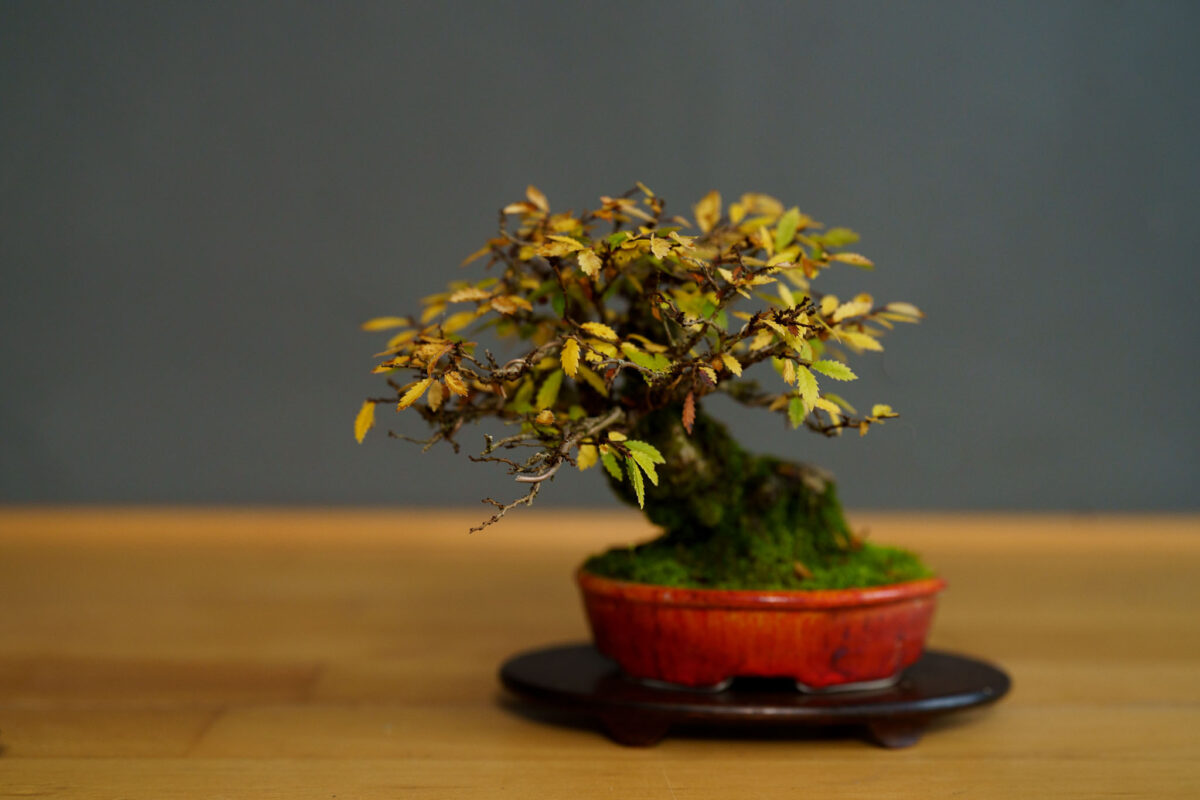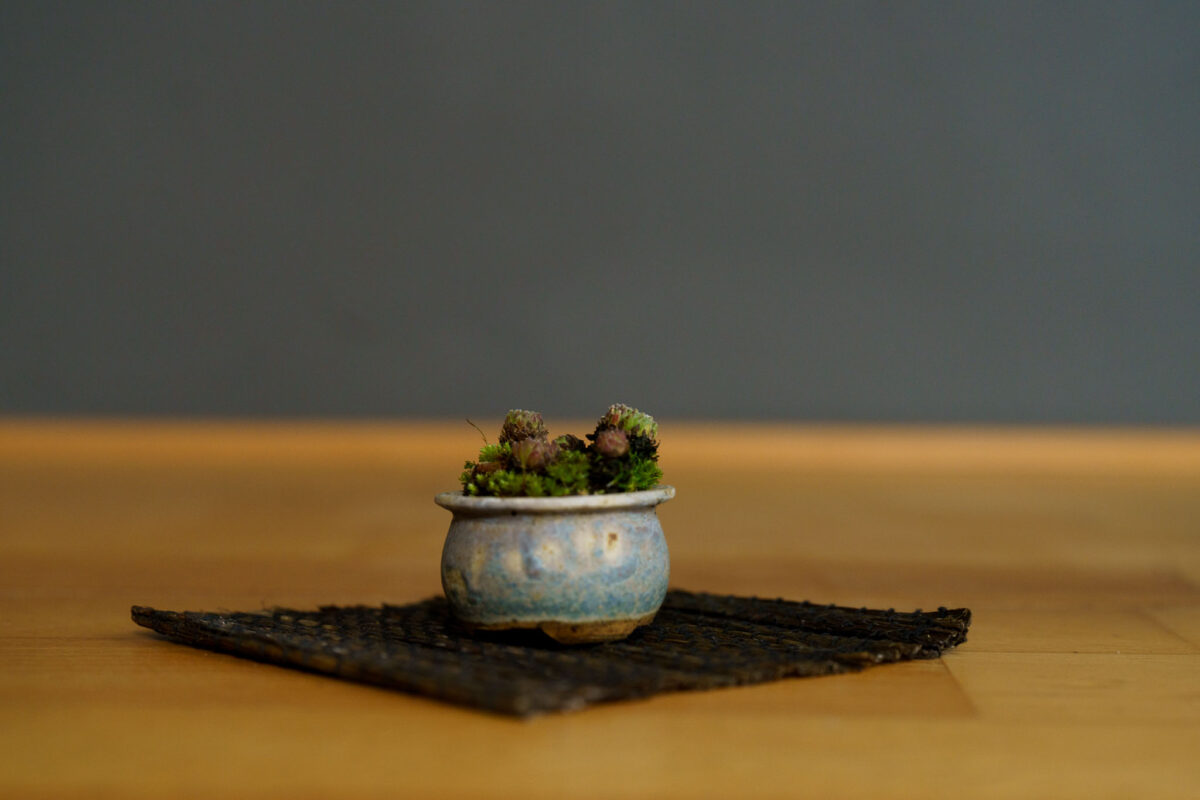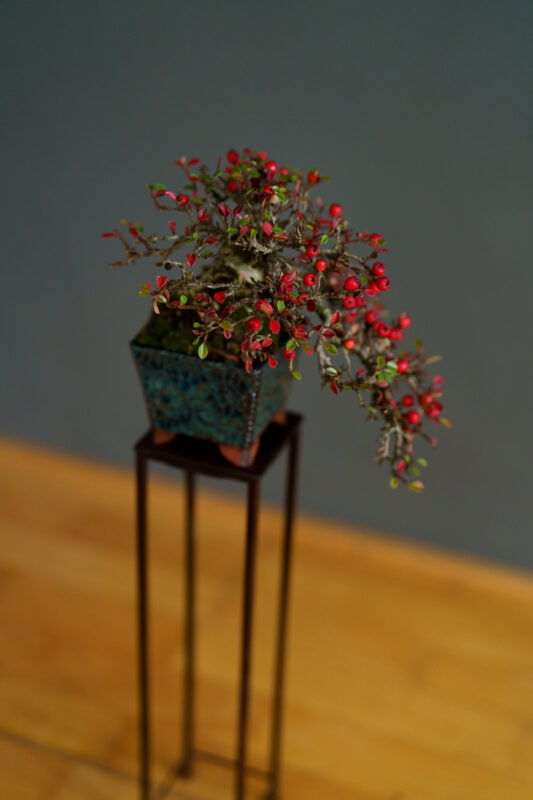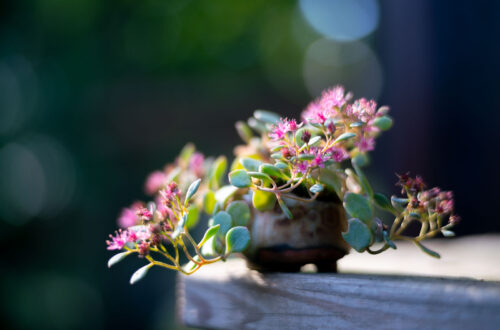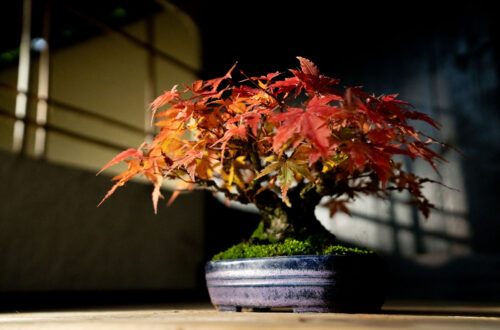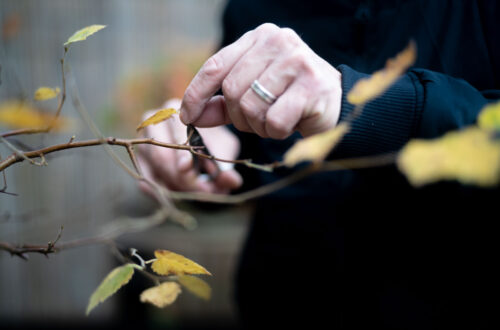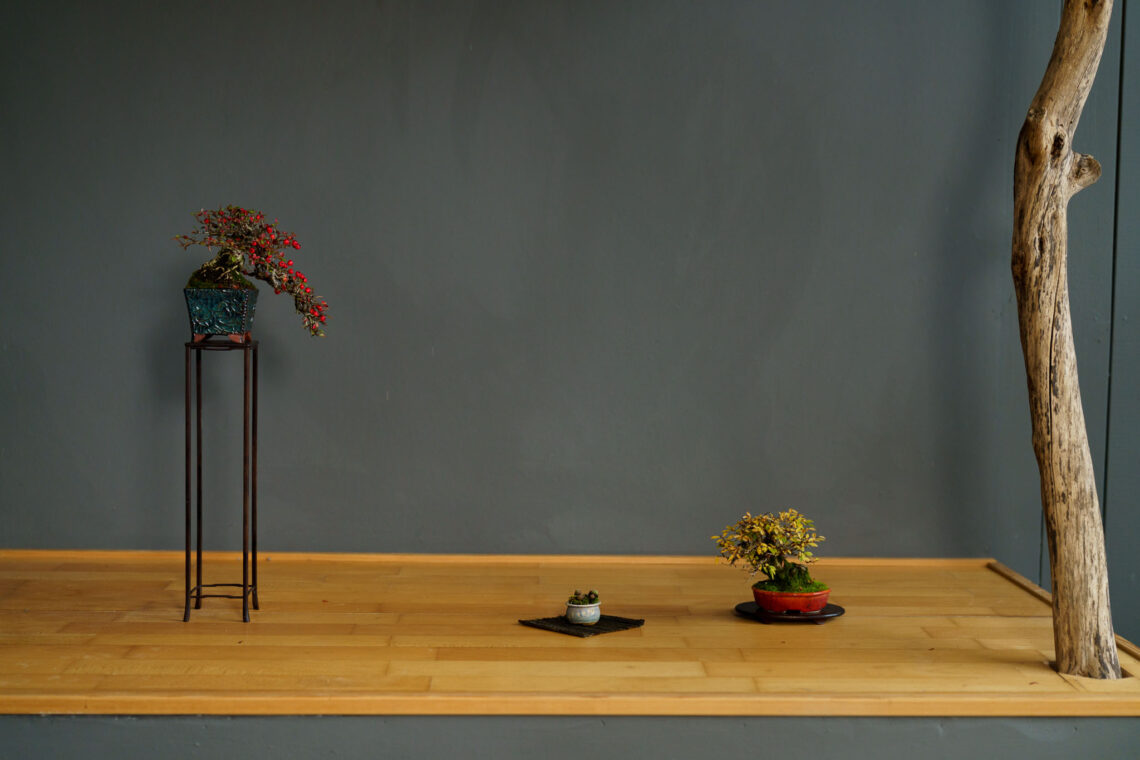
The Beauty of Autumn Berries on Shohin Bonsai
As the crisp autumn air settles in and the leaves begin to change, there’s a special charm that graces our bonsai collections. Among the most captivating sights are the vibrant autumn berries that adorn small shohin bonsai. These tiny fruits not only add a splash of color but also bring a sense of seasonal magic to your miniature trees.
The Allure of Autumn Berries
Autumn berries on shohin bonsai are a delightful spectacle. These small fruits, often in shades of red, orange, and yellow, create a striking contrast against the foliage. They serve as a reminder of the changing seasons and the beauty that each one brings. The berries can last well into the winter, providing visual interest even as the leaves fall away.
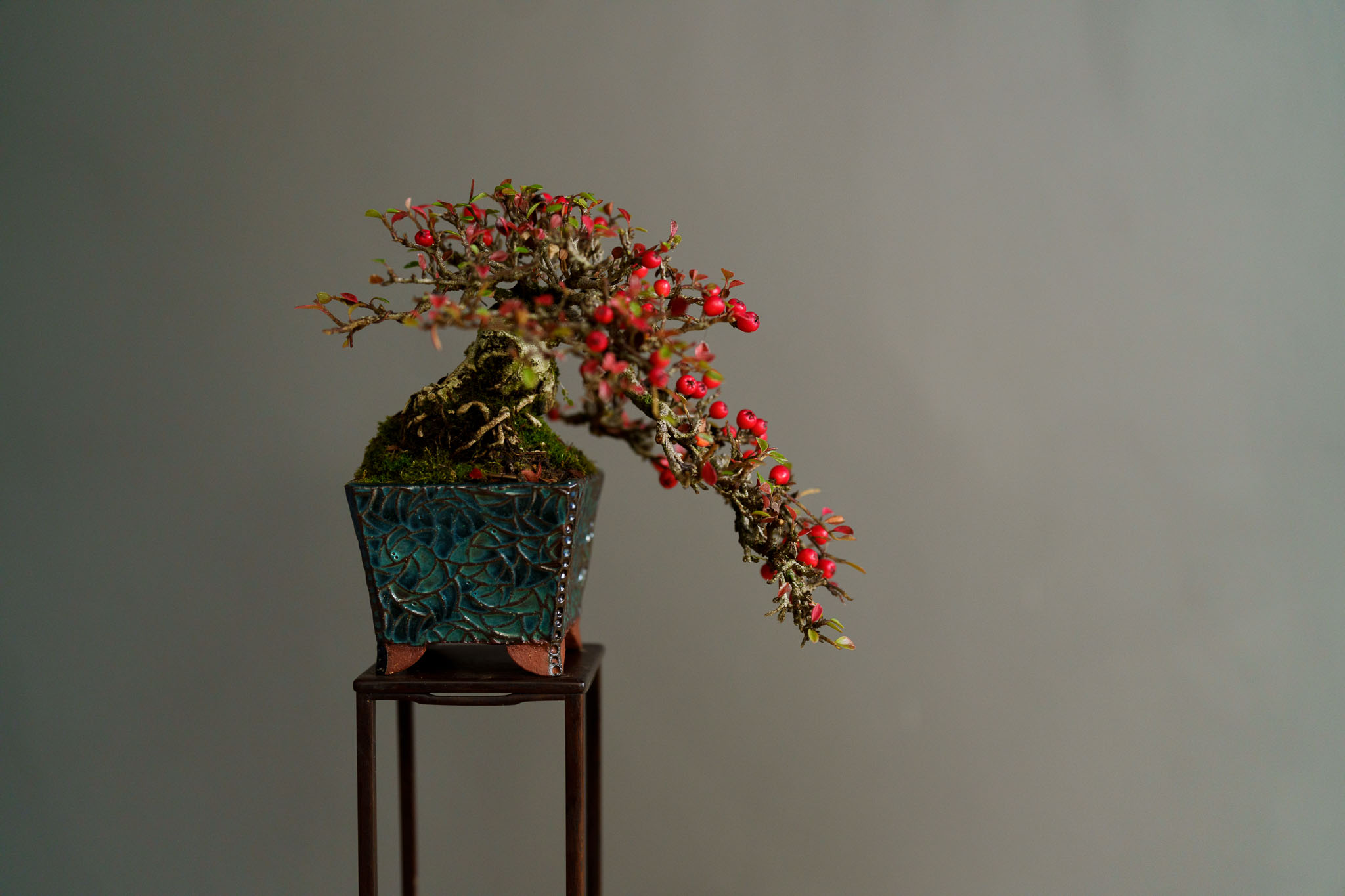
The Cotoneaster in the Tokonoma display has been from a small ordinary nursery plant through many years. To avoid birds feasting on it an eat the fruits with a few minutes its placed in a protecting box made of an metal net. Allowing light and not birds to penetrate.
Popular Shohin Bonsai with Autumn Berries
Several species of shohin bonsai are known for their beautiful autumn berries. Here are a few favorites:
- Cotoneaster: Known for its small, bright red berries, Cotoneaster is a popular choice for shohin bonsai. The berries appear in clusters and can last through the winter, adding a festive touch to your bonsai display.
- Pyracantha (Firethorn): This species produces an abundance of orange or red berries that are both vibrant and long-lasting. Pyracantha is also appreciated for its thorny branches, which add an interesting texture to the bonsai.
- Crabapple (Malus): Crabapple bonsai are cherished for their beautiful blossoms in spring and their small, colorful apples in autumn. The fruits can range from yellow to deep red, providing a stunning visual treat.
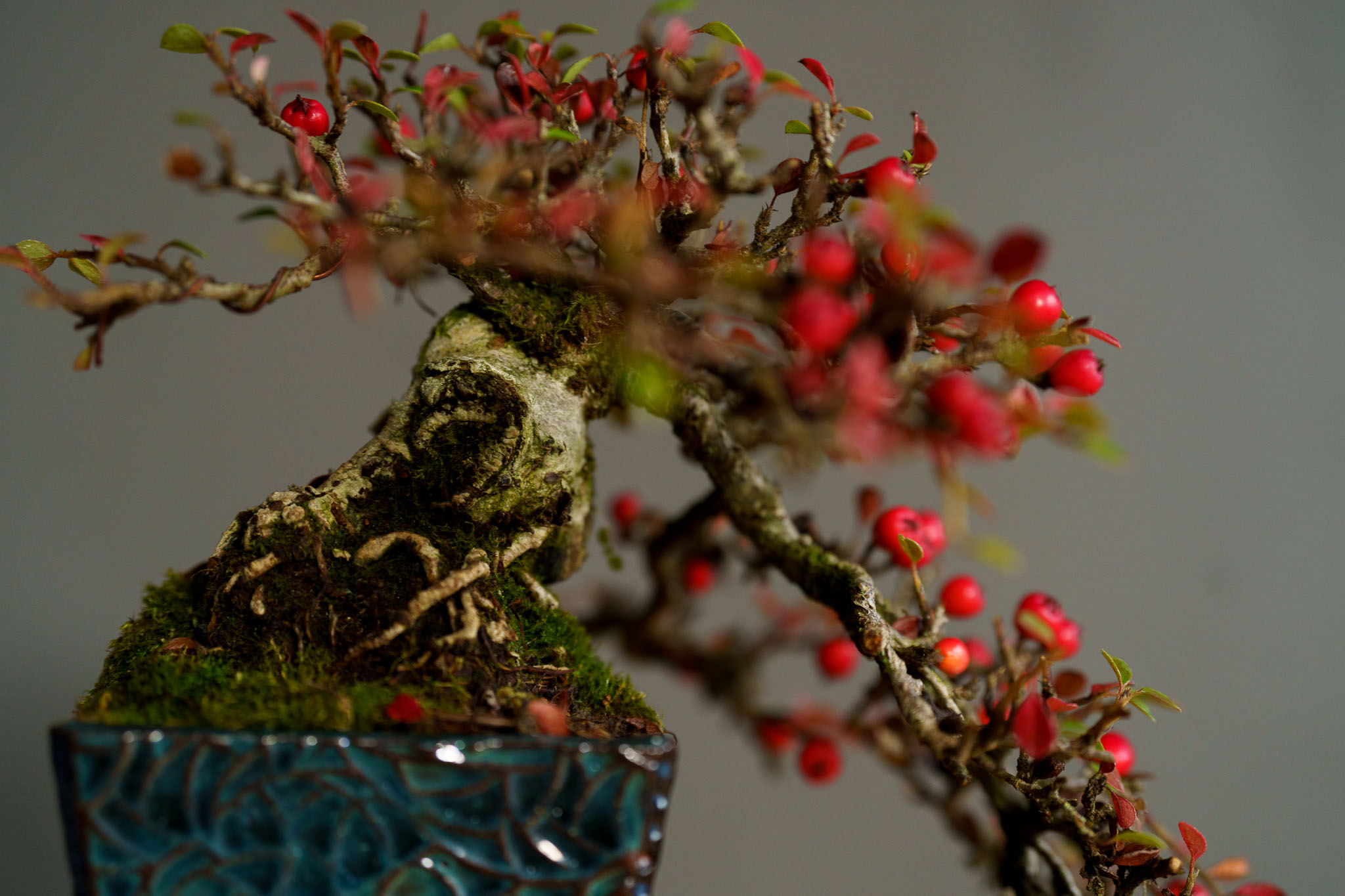
Detail of the old trunk on the Cotoneaster.
Caring for Berry-Bearing Shohin Bonsai
To ensure your shohin bonsai thrive and produce beautiful berries, follow these care tips:
- Sunlight: Most berry-bearing bonsai species require plenty of sunlight. Ensure they receive at least 6 hours of direct sunlight daily.
- Watering: Keep the soil consistently moist but not waterlogged. Proper drainage is crucial to prevent root rot.
- Fertilizing: Use a balanced fertilizer during the growing season. In autumn, switch to a low-nitrogen fertilizer to encourage berry production.
- Pruning: Regular pruning helps maintain the shape of your bonsai and promotes healthy growth. Be careful not to remove too many berry-bearing branches.
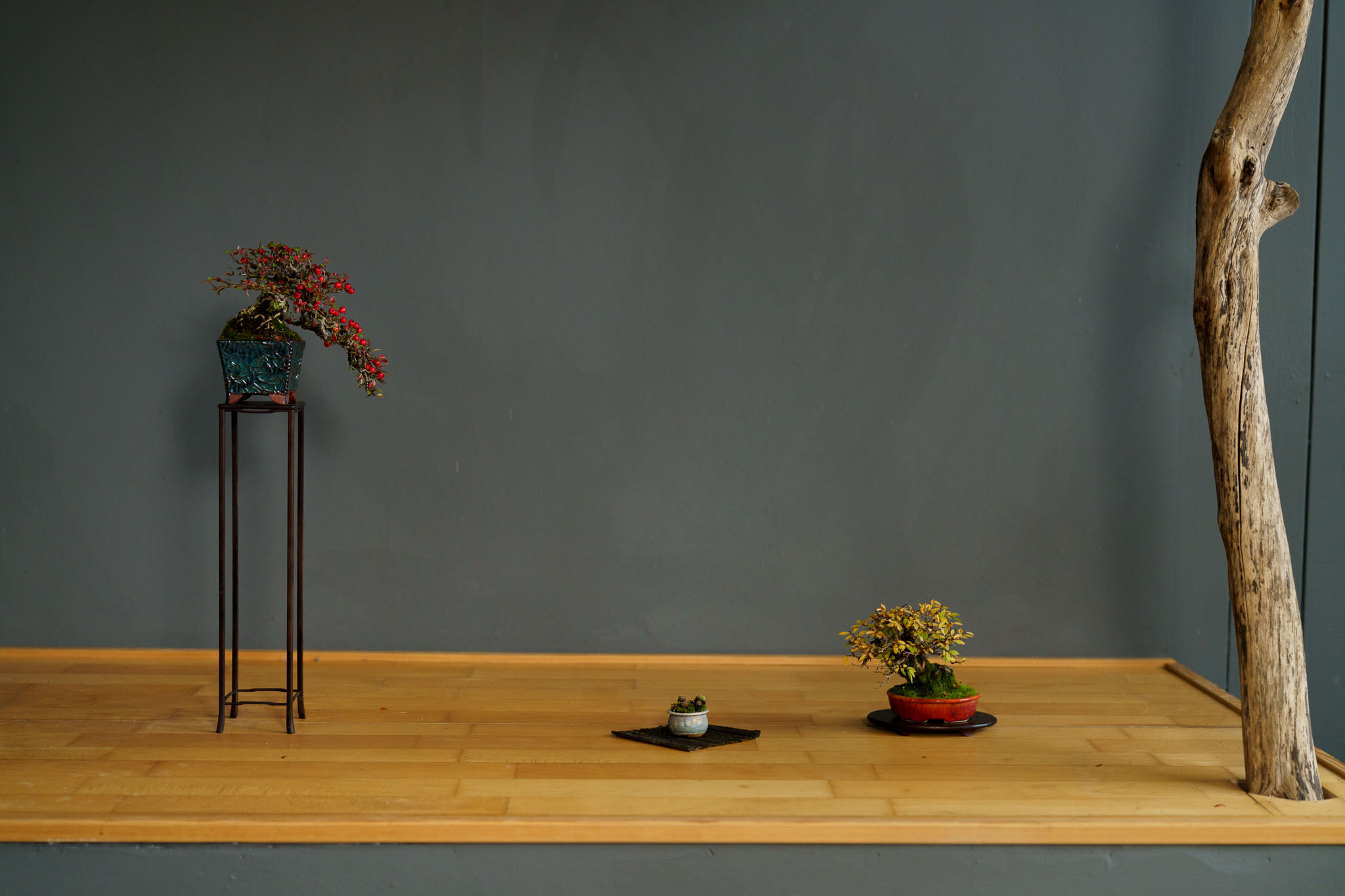
Cotoneaster (left) accompanied by a Chinese elm. The accent is a Sedum.
Enjoying the Seasonal Display
One of the joys of growing shohin bonsai with autumn berries is the opportunity to create stunning seasonal displays. Arrange your bonsai in a way that highlights their colorful fruits. You can also incorporate other autumn elements, such as fallen leaves or a piece of moss to enhance the seasonal theme.
Conclusion
Autumn berries on shohin bonsai are a testament to the beauty and diversity of these miniature trees. They bring a touch of nature’s splendor to your home or garden, making the autumn season even more special. Whether you’re a seasoned bonsai enthusiast or a beginner, the sight of these vibrant berries is sure to inspire and delight.



